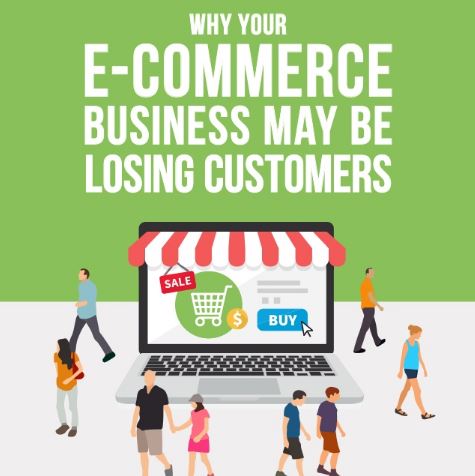Introduction
You offer a great product or service. Your online traffic is respectable. And yet, a disproportionate number of users visit your site without buying anything. It can be very frustrating – especially when you don’t know why they keep leaving.
Obviously, every e-commerce site is different. And your own abandonment woes could stem from any number of factors. But below are six of the most common reasons why online customers fail to convert. Fix these potential holes, and you stand a much better chance of generating more sales.
1. Not being mobile ready
In 2016, mobile browsing surpassed desktop browsing for the first time – with no indication that this trend will ever reverse. And while the exact numbers vary from industry to industry, it’s likely that the majority of your own visitors are viewing your e-commerce store on small screens.
Accordingly, it’s imperative you optimize your e-commerce site for mobile users – complete with a responsive design that looks great on all displays. As an added bonus, designing for mobile can also help you rank better on Google and other search engines.
2. Confusing pricing
Don’t you hate it when restaurants and grocery stores don’t publish their prices? You want an item on the list but have no idea what the damage will be — so you abandon the purchase.
If your own prices are confusing or hard to find, you’re likely placing your customers in the same position. However, making your prices clear and accessible can help dramatically improve your overall conversion rate.
3. Unnecessary friction
Most e-commerce merchants want to capture as much information about their customers as possible, which is why they request phone numbers or ask users how they heard about their online store. But if you don’t need these pieces of information to make the sale, consider trimming down your list of required fields during the checkout process.
As long as you have each user’s email, you can always follow up later to collect more data. But only do this after you’ve made the sale.
4. Excessive clutter
It’s common practice to add buttons, widgets, calls-to-action, and other graphical elements to e-commerce webpages. But every page on your site should have one purpose, with minimal clutter and as few distractions as possible. Adding lots of widgets might seem like a good idea. But this approach can actually dilute whatever message you’re trying to convey and whatever action you’re trying to have visitors take. So keep things as simple and as clean as possible.
5. Slow loading times
According to Google, most mobile users will abandon a website if it doesn’t load within three seconds. That’s not a lot of wiggle room – especially when the user is accessing the site with a cellular data connection.
Coding your site for mobile users will help speed things up. But it’s also important you optimize photos, eliminate clutter, and consider using a caching plugin that can help artificially speed up load times.
6. The unknown
Even after implementing the above tips, you might still see high abandonment rates without knowing why. Fortunately, heat-map and recording software can help.
- Heat maps reveal what the average user does on your site – including which buttons are being ignored and which pages rarely get scrolled
- Video recording software show you what individual users are doing on your site – including the pain points they face while shopping
In both cases, these tools can help you quickly spot potential leaks in your sales funnel. And armed with this knowledge, you can go in to plug in the holes.
Conclusion
Want a more thorough breakdown of why e-commerce customers fail to convert and what steps you can take to save those sales? The free infographic below covers many of the most common conversion-killing mistakes and how to fix them.
Graphic created by Performance Card Service.











